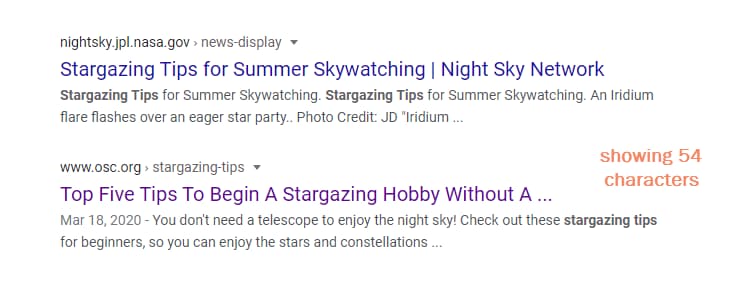Title tags are one of the most crucial elements in the realm of on-page SEO. A well-optimized title tag can significantly enhance your search engine rankings, boost your visibility on the Search Engine Results Page (SERP), and stimulate user engagement. This comprehensive guide will shed light on the importance of title tag optimization, the best practices to follow, and the pitfalls to avoid in your journey to mastering SEO.
Diving into Title Tags: What They Are
A title tag is an HTML (HyperText Markup Language) element that describes the content of a webpage. It’s the title that appears on the SERP and browser tabs, acting as a concise summary of the web page’s content.
<title>Your Page's Title Here</title>
The above code snippet shows how a title tag appears in HTML. It is placed within the <head> section of your webpage’s HTML code.
The Crucial Role of Title Tags
Title tags play an integral role in both SEO and user interaction. Let’s examine why they’re so important:
1. Display in Web Browsers
Modern web browsers like Google Chrome, Mozilla Firefox, and Safari show your site’s title tag on the browser tab, helping users identify the content of the webpage they’re viewing.

2. Display in Search Engine Results
When your webpage appears on the SERP, the title tag is displayed as the clickable link leading to your site. A well-optimized title tag can significantly affect your click-through rate (CTR).

3. Used in Social Media Sharing
When a webpage is shared on social networks, the title tag is usually displayed as the default title of the shared content, providing a snapshot of the page’s content to potential viewers.
4. Affect the Filenames of Saved Web Pages
When a user saves a webpage, the default filename is usually the title tag, making it easy for the user to find the saved page later.

Crafting the Perfect Title Tag: Best Practices
Optimizing your title tag involves striking a balance between addressing the needs of search engines and appealing to human users. Here are some best practices to follow:
1. Aim for the Sweet Spot: 50-60 Characters
Search engines typically display the first 50-60 characters of a title tag. Aim to keep your title tag within this range to prevent it from being truncated. If your title tag is too short, it might not provide enough information for users or search engines.
2. Showcase Your Brand
Including your brand name in the title tag can lend credibility and recognition to your pages. For your homepage, place the brand name at the beginning. For inner pages, it’s best to place the brand name towards the end, allowing the most relevant information to be at the forefront.
3. Use Relevant Keywords
Relevant keywords in the title tag can significantly enhance your SEO. However, avoid keyword stuffing as it can make the title tag unreadable and potentially harm your SEO. Instead, aim to use one or two targeted keywords naturally within the title.
4. Keep It Unique
Each page on your website should have a unique title tag. This helps search engines understand the content of each page and prevents any confusion that could arise from duplicate titles.
5. Be Descriptive and Relevant
The title tag should accurately describe the content of the page. This not only helps search engines index your pages correctly but also lets users know exactly what to expect when they click on your page.
6. Utilize Key Phrases
If your industry is competitive, leverage long-tail keywords or key phrases that are specific to what your target users might be searching for. This can increase your chances of ranking higher in the SERPs.
7. Use Synonyms
Incorporating synonyms for your keywords can help your page appear in more search results. Search engines are adept at identifying synonyms and will often display pages with similar meanings in the results.
8. Include Your Unique Selling Proposition
Your title tag is an excellent place to highlight what makes your business unique. This could be a special offer, a unique product feature, or a specific service you provide. This can make your page stand out in the SERPs and encourage users to click through to your site.
9. Avoid Excessive Use of Keywords
While keywords are important, excessive use can lead to keyword stuffing, making your title tag look spammy. This can negatively impact your search engine rankings and user experience. Aim for a natural incorporation of keywords into your title tag.
10. Pay Attention to Spelling and Grammar
Ensure your title tag is free from spelling and grammatical errors. A title tag with errors can make your site appear unprofessional and can negatively impact your click-through rate.
Mistakes to Avoid in Title Tag Optimization
While title tag optimization can significantly boost your SEO, certain practices can hinder your efforts:
1. Avoid Keyword Stuffing
Overusing keywords in your title tag can make your content appear spammy to both search engines and users. This can result in lower rankings and poorer user experience.
2. Avoid Using Stop Words
Stop words, such as “and,” “or,” and “the,” can consume valuable character space in your title tag. Try to minimize the use of these words where possible.
3. Avoid Duplicate Titles
Each page on your website should have a unique title tag. Duplicate title tags can confuse search engines and lead to lower rankings.
Title tag optimization is a critical aspect of on-page SEO that can significantly enhance your search visibility and user engagement. By implementing the best practices outlined in this guide and avoiding common pitfalls, you can craft compelling title tags that boost your search engine rankings and drive more traffic to your site.

